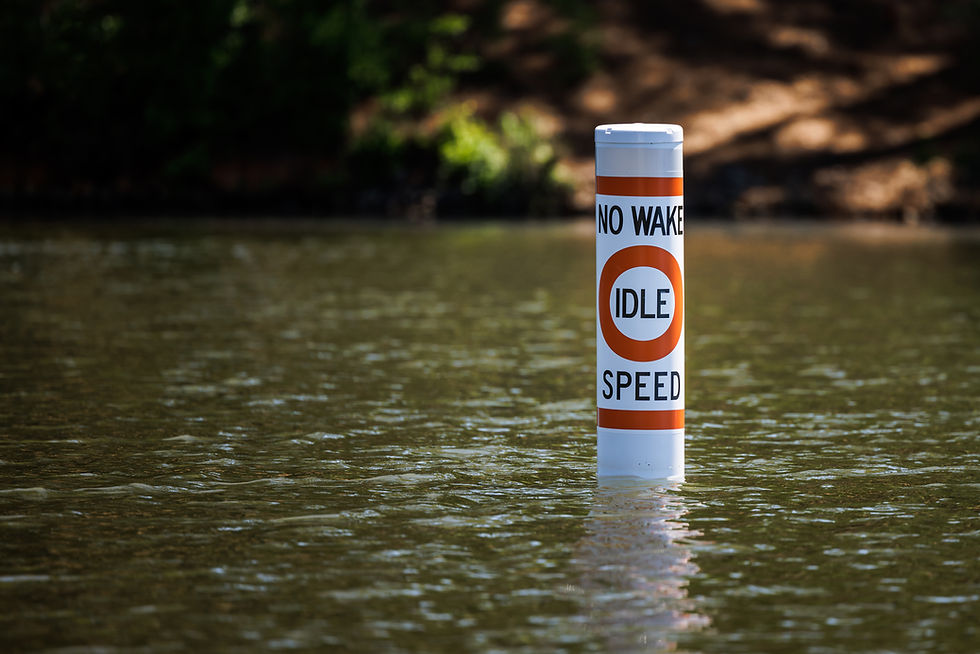Boating Safety: Know the Law Stay Safe
- Editor - Lost on the Lake
- Jul 3
- 3 min read

There’s nothing quite like a sunny day on the lake—the sparkle of sunlight on the water, the laughter of friends and family, and the thrill of cruising across open water. Whether you’re water skiing, fishing, or simply drifting along with the breeze, boating is one of the most cherished pastimes in lake communities across America.
But behind every great day on the water is a shared responsibility: boating safety.
Every year, hundreds of boating accidents occur on U.S. lakes, many of which are preventable with proper awareness and precautions. From life jacket use to understanding lake traffic rules, a few basic safety measures can mean the difference between a fun outing and a dangerous emergency.
Start with the Basics:
Life Jackets Save Lives
The most fundamental rule of boating safety is simple: Wear a life jacket. According to the U.S. Coast Guard, over 80% of boating-related drowning victims were not wearing life jackets. Many people assume they don’t need one because they’re good swimmers, but cold water shock, injury, or unexpected waves can take anyone by surprise.
Missouri law requires all children under the age of 7 to wear a U.S. Coast Guard-approved life jacket while on any boat unless they are in a fully enclosed cabin. But age shouldn’t be the only consideration. Everyone on board should have access to a properly fitted life jacket, and ideally, wear it at all times.
Know Your Boat,
Know the Rules
Before heading out, it’s crucial to understand your boat’s operation and the lake’s specific boating regulations. Whether you’re driving a pontoon, a ski boat, or a personal watercraft (PWC), each vessel has its own controls and handling characteristics.
Take time to review local regulations—most lake areas, such as Table Rock Lake has specific rules about speed limits, no-wake zones, and restricted areas. Ignoring these rules not only endangers others but can also result in hefty fines.
Boating safety courses are highly recommended—and sometimes legally required—for operators. In Missouri, anyone born after January 1, 1984, must possess a Boating Safety Education Card to operate a motorized vessel.
Watch the Weather and Water Conditions
Summer storms can appear quickly, turning a peaceful lake into a dangerous environment. Check the forecast before you go out, and stay alert for changes in the sky while boating. If dark clouds roll in or you hear thunder, head for shore immediately.
High winds and rough water can also affect boat control and passenger safety. Don’t take chances with unstable conditions, especially if you’re unfamiliar with the lake or boating in general.
Stay Sober and Alert
Just like driving a car, operating a boat under the influence of alcohol or drugs is illegal and extremely dangerous. Alcohol impairs judgment, slows reaction times, and increases the risk of accidents on the water. In fact, the risk of a fatal boating accident doubles when alcohol is involved.
Designate a sober captain for every outing. Passengers should also drink responsibly and stay aware of their surroundings.
Respect Others on the
Water
Lakes are shared spaces, often filled with a mix of boaters, swimmers, kayakers, and anglers. Courtesy and awareness go a long way. Keep a safe distance from other vessels, especially when towing skiers or tubers. Slow down near docks and marinas, and always obey posted signs and markers.
Noise pollution is another consideration. While it’s fine to enjoy music or power your engine, be mindful of quiet coves and residential shorelines where excessive noise may disturb wildlife or residents.
Be Prepared for
Emergencies
Every boat should be stocked with essential safety gear: a first aid kit, a throwable flotation device, a fire extinguisher, and a whistle or horn. Keep a fully charged phone or VHF radio on board in case of emergency, and always let someone know your boating plans before you depart.
It’s also smart to keep a basic tool kit and extra fuel on hand. Check into Tow Boat USA or SeaTow for added protection.
Conclusion:
A Culture of Safety
Boating is meant to be fun, relaxing, and memorable—but it should never be careless. Creating a culture of safety on the lake begins with individual responsibility. By wearing life jackets, following local laws, and staying alert, we ensure that everyone—from seasoned captains to first-time passengers—can enjoy the water safely.
The lake is a treasure meant to be shared. Let’s all do our part to keep it safe for the next generation of boaters.
.jpg)




Comments